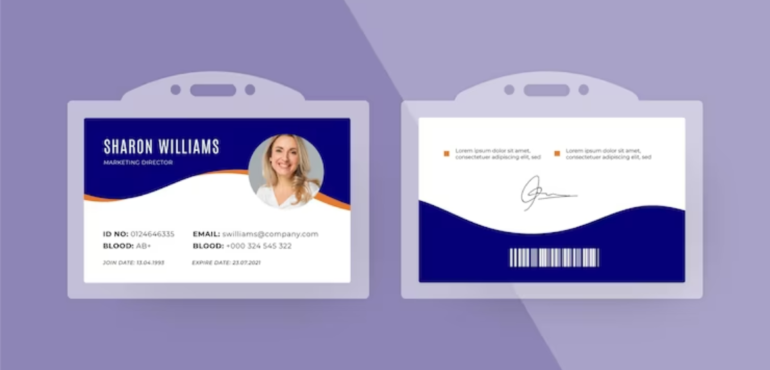Modern Corporate Identity Cards: Trends, Innovations, Impact
Corporate identity cards have become very useful in business functioning. Business trends are highly modernized now and digitalization has become the norm of practice.
Digital identity has been well-established as one of the most significant technology trends on one’s planet. It does mean; a revolution in how individuals tend to interact with public institutions as well as even private organizations is in full swing. Corporate identity cards are very useful in the business world.
What is a digital identity?
A digital identity is indeed a set of validated digital attributes and also credentials for the digital world, similar to a person’s identity for the real world.
Usually issued or even regulated by a national ID scheme, a digital identity uniquely does identify a person online or offline.
- It can also include attributes such as a unique identity number, social security number, vaccination code, name, place, date of birth, citizenship, biometrics, as well as more, as defined by national law.
- There are specific credentials like an eID, a derived digital driver’s license on a mobile phone (in several US states), a unique biometric-related ID number like in India, a mobile ID, or a Digital ID Wallet (EU initiative, Australia, etc. It can rather be made use of to authenticate its owner.
- These credentials can also include a digital identity certificate to sign electronically (giving consent), obtain a seal (protecting integrity), and a stamp (set time).
- This sort of dossier does tend to target sovereign digital identity frameworks piloted or supervised by a national agency.
Digital ID milestones
National ID has indeed increased in number, visibility, as well as reach.
- The UN did initiate discussions around digital identity, blockchain, cryptographic technologies, and its benefits for the underprivileged. Four hundred experts did share best practices as well as ideas on providing universal identity to all.
- New technologies as well as regulations supporting the transformation ahead are no doubt in vogue.
- The United Nations (UN) and World Bank ID4D initiative does rather aim to provide everyone on the planet with a legal identity by 2030.
- Digital driver’s license projects (also in fact referred to as mobile driver’s licenses gathered momentum in countries including the USA, Denmark Korea, UK, Australia, as well as the Netherlands.
- Tests of blockchain technologies did take place: in Estonia, meant to aid the development of a ground-breaking transnational e-residency program; in the UK, to see how it can be made use of to help make efficient welfare payments to citizens.
- Smart borders as well as airports have indeed emerged at a faster pace. ePassports are now in circulation and a strong push behind biometrics, they did offer travelers a taste of cross-border movement that is as secure as it is swift as well as also seamless.
- This recent technology does help define a secure mobile app to store digitalized as well as encrypted versions of ID documents, whether it is an identity, a driver’s license, vehicle card registration, healthcare credentials, etc.
Citizens can of course have all their ID credentials at hand in a single, secure source for identification and ID verification services.

Modern Corporate Identity Cards: Trends, Innovations, Impact
Digital identity – The five forces
Citizens will rather be equipped with a form of mobile identity hopefully by 2026.
The idea is to make digital mobile identity and also online services defining features of their modernization processes in the years to come.
What to expect concerning business trends?
- More accessibility to the existing Internet and even more mobility.
- An accelerated shift to digital-first servicing that gets boosted by the COVID-19 pandemic.
- Greater demand for security and trust.
- More calls are required for public supervision of digital identification systems.
- Even more national ID initiatives and implementations.








